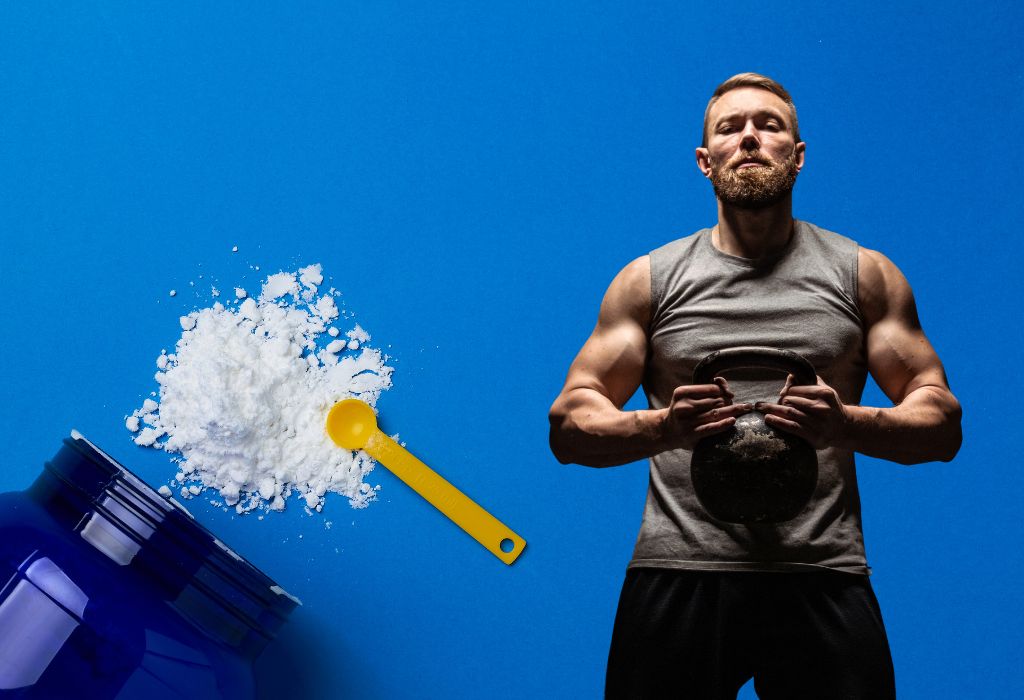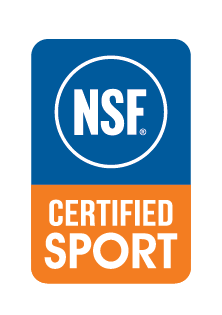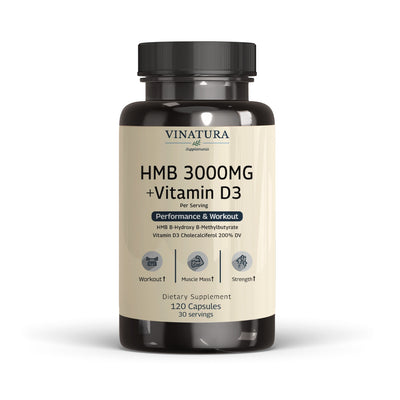
How Long Does Creatine Take to Work?
Creatine typically takes 1 to 4 weeks to start working, depending on how it’s used. With a loading phase (about 20g/day for a week), noticeable effects like strength gains may appear within 5–7 days. Without loading, consistent daily use (3–5g) usually takes 3–4 weeks to reach full effect.
Before exploring further, please read the disclaimer located at the end of this webpage.
Key Takeaways
- Creatine does NOT deliver immediate effects after just 1–2 doses.
- With a loading phase, visible results may appear within 5–7 days.
- Without a loading phase, effects typically emerge after 3–4 weeks.
- Creatine enhances strength, anaerobic performance, and lean muscle mass.
- Individual physiology, diet, creatine type, and training frequency significantly impact the speed of creatine effectiveness.
How Long Does it Take for Creatine to Work Before Exercise?

First, you must understand that creatine is NOT a pre-workout stimulant like caffeine. You won't notice a tangible difference after the very first dose. creatine’s mechanism of action relies on saturating muscle cells — a process that simply cannot happen overnight.
Depending on whether you follow a loading phase, it generally takes between 1 and 4 weeks of consistent supplementation (3–5 grams daily) for creatine to deliver noticeable benefits.
On Reddit, many users on platforms like Reddit report noticing effects after one to four weeks of consistent use. The most common answer tends to be around two weeks, particularly for those who undergo a loading phase.*
In a discussion with Dr. Rhonda Patrick and Dr. Darren Candow on FoundMyFitness Clips, a creatine expert, emphasized that while 5 grams per day may provide benefits over time, higher doses—especially during periods of sleep deprivation or cognitive stress—can lead to more noticeable and immediate effects.*
He referenced a study showing that a single high dose of around 0.35g/kg (~25g for a 70kg person) significantly improved cognitive performance after 21 hours of sleep deprivation, with measurable increases in brain creatine levels within just a few hours.*
Learn more: Does Creatine Show Up On Drug Tests?
This highlights how the timing and dosage of creatine—not just the total duration—can influence how quickly benefits are felt, especially for mental performance.
At this point, a common question arises: What is the loading phase, and why does it impact how fast creatine works?
In essence, the loading phase is a strategy designed to accelerate creatine saturation in muscle cells. Instead of waiting several weeks, users take a high dose (around 20g per day), divided into 3–4 smaller servings, consistently for about 7 days to quickly fill their creatine stores.
In summary, the loading phase allows muscles to reach creatine saturation more quickly.
To understand this more clearly, we will explore what happens when you use creatine with and without a loading phase in the next section of the article.
How Long Does Creatine Take to Work?
With Loading Phase
The loading phase is a common strategy used by individuals seeking faster improvements in strength and muscle mass.
As previously discussed, during the loading phase, users consume around 20 grams of creatine per day, divided into four smaller doses, consistently for about a week. After this period, they transition to a maintenance dose of 3–5 grams per day.
A high initial intake quickly saturates muscle creatine stores, ensuring consistent availability for muscular activity during the maintenance phase. This accelerates muscular development and performance gains. As a result, noticeable effects can often be observed within just 5–7 days.
According to a study by Greenhaff et al. (1994), intracellular creatine concentration increased by 20% after six days of loading, leading to enhanced work output, reduced fatigue, and significant improvements in strength (Greenhaff et al., 1994) [1].
However, it’s important to note that loading is not mandatory for every gym-goer. The loading phase commonly causes water retention and bloating, making some individuals feel uncomfortable during the first week.
This raises an important question: What happens if you skip the loading phase?
Without Loading Phase
For those who prefer to avoid the loading phase, creatine supplementation simply involves consuming 3–5 grams daily consistently over 21–28 days to achieve full muscle saturation.
In contrast to loading, low-dose supplementation produces more gradual and less noticeable effects in the early stages. Typically, measurable results begin to appear by the third week.
A study by Hultman et al. (1996) confirmed that creatine saturation can still be fully achieved without loading, as long as intake remains consistent (Hultman et al., 1996) [2].
The following comparison illustrates the differences in creatine saturation timelines between the two approaches:

Creatine Timeline: What to Expect
To better understand the supplementation journey, below is a table summarizing the typical creatine usage experience for someone using a loading phase alongside regular resistance training.
This summary is based on insights from YouTuber Jeremy Ethier and various discussions from Reddit, Quora*:
|
Week |
Guideline |
What to Expect |
Note |
|
Week 1 |
Rapid loading: 20g/day divided into 4 doses |
|
|
|
Week 2 |
Maintain with 3–5g/day |
|
|
|
Week 3 |
|
||
|
Week 4 |
|
|
On his YouTube channel, Matthew Choi also shared his 30-day journey of using creatine.* Specifically, he supplemented with creatine without a loading phase for 30 consecutive days, meticulously documenting his physical changes throughout the month. Here are the results he reported:
|
Factor |
Change/Notes |
|
Weight |
Increased from 184 → 192 lbs (+8 lbs / ~3.6 kg) |
|
Body Composition |
Felt larger and fuller, particularly in the arms, chest, and back |
|
Strength |
Not directly measured (no gym training), but reported improved workout efficiency and perceived strength |
|
Muscle Recovery |
Noticeably faster recovery, able to train daily at higher intensities |
|
Side Effects |
No significant side effects observed |
|
Water Retention Effect |
Slight “swelling” sensation in the muscles – partly water retention, but also indicative of muscle growth |
Thus, this experience provides a practical reference for individuals considering creatine supplementation without undergoing a loading phase. Additionally, many other public figures have shared similar creatine usage experiences that can be independently verified.
Understanding the above timeline is critical to avoid false or unrealistic expectations regarding creatine supplementation. A significant number of individuals prematurely discontinue creatine after just a few days simply because they “don’t feel any effects.”
It is important to remember that creatine is not like caffeine—it does not produce immediate effects but requires time to accumulate and exert its benefits.
Furthermore, several factors such as diet, individual physiology, daily meat intake, and training intensity can influence the rate at which results manifest.
For instance, vegetarians often respond more dramatically to creatine supplementation due to inherently lower baseline levels of endogenous creatine (Youri et al., 2007) [3].
More specifically:

Factors That Influence How Quickly Creatine Works
There are numerous factors that influence the effectiveness of creatine. Let’s delve deeper into each to better understand how creatine interacts with the body and how to optimize its usage.
Creatine Baseline Levels
One of the most critical factors affecting how quickly creatine takes effect is the individual's pre-existing creatine levels. Research shows: “The human body can store approximately 120–160 mmol/kg dry muscle, with full saturation around 160 mmol” (Harris et al., 1992) [4].
This baseline varies based on diet. If you are vegetarian or consume very little red meat, your initial creatine stores are likely lower, allowing faster absorption and noticeable effects within just 3–5 days of loading.
Conversely, those with a high intake of animal protein (beef, tuna, lamb, etc.) experience slower absorption and less pronounced early effects.
In simple terms:
Higher baseline creatine levels → Less capacity for additional uptake → Slower absorption and slower results.
Form of Creatine Used
Typically, Creatine Monohydrate is the most commonly used form, offering the best cost-to-effectiveness ratio. However, solubility in water also matters. Common types include:
- Creatine Monohydrate: The standard form, affordable and effective. It requires sufficient water intake (250–300 ml per dose) and should be split into smaller doses to minimize gastrointestinal discomfort and maximize absorption (Jagim et al., 2018) [5].
- Creatine HCL: A form that dissolves easily and is absorbed quickly, though clinical evidence regarding its effectiveness and safety remains limited.
- Buffered creatine (Kre-Alkalyn): Marketed as a form that reduces conversion to creatinine, but it also requires further credible research to substantiate its claims.
When to Use and Nutrients Combination
In practice, the timing of creatine intake is less critical compared to substances like caffeine or pre-workout formulas. However, certain timing strategies can enhance absorption:
-
Post-workout Creatine intake combined with carbs/protein: Consuming 50–100g of carbohydrates or whey protein post-workout can trigger an insulin response that promotes creatine transport into muscles (Steenge et al., 2000) [6].
Consulting a professional may further help tailor the timing and combination strategies for maximum effect.
Read more: Should You Take Creatine Before Bed? Is It Effective?
Physical Activity Level
Individuals who train more frequently and with higher intensity tend to experience faster creatine uptake—especially those engaging in heavy compound movements—tend to absorb creatine more rapidly.
This phenomenon is simply due to "training" the muscles to demand more energy, thereby facilitating faster creatine saturation.
Additionally, individuals with greater lean body mass inherently have a higher creatine storage capacity, leading to quicker and more noticeable results.
Physiological Factors: Age, Sex, and Hormonal Profile
Finally, another unavoidable factor influencing creatine effectiveness is physiological status. Males naturally possess greater muscle mass and a higher metabolic rate, making them more responsive to creatine supplementation than females.
Moreover, younger individuals tend to have higher ATP availability and superior ATP resynthesis capabilities, given that their cells have not yet undergone significant aging or apoptosis. As a result, creatine’s effects on strength gains are more pronounced in younger populations. Conversely, in older adults, creatine's primary benefit shifts toward preserving muscle mass and preventing muscle degradation.
Conclusion
Thus, through this article, it becomes clear that creatine is not a miracle supplement.
However, when used correctly, it stands among the most effective supplements for improving strength, increasing muscle mass, and enhancing overall workout performance.
Moreover, if following a loading phase, the timeframe for creatine to exert noticeable effects can be shortened dramatically—from the typical 3–4 weeks down to approximately 1 week.
Ultimately, informed and strategic use of creatine based on individual goals and needs can yield the most favorable outcomes.
Testimonial Disclaimer
*The testimonials presented on this website are provided by individuals based on their personal experiences with our products. These testimonials represent individual opinions and experiences, which may not be typical or applicable to all users of our products. Results may vary depending on a variety of factors, including individual health, lifestyle, and adherence to product usage instructions.References
- [1] Greenhaff, P. L., et al. “Effect of Oral creatine Supplementation on Skeletal Muscle Phosphocreatine Resynthesis.” AJP Endocrinology and Metabolism, vol. 266, no. 5, American Physiological Society, May 1994, pp. E725–30, https://doi.org/10.1152/ajpendo.1994.266.5.e725.
- [2] Hultman, E., et al. “Muscle creatine Loading in Men.” Journal of Applied Physiology, vol. 81, no. 1, American Physiological Society, July 1996, pp. 232–37, https://doi.org/10.1152/jappl.1996.81.1.232.
- [3] Youri E.C. Taes, et al. “Lowering Methylation Demand by creatine Supplementation Paradoxically Decreases DNA Methylation.” Molecular Genetics and Metabolism, vol. 92, no. 3, Elsevier BV, Aug. 2007, pp. 283–84, https://doi.org/10.1016/j.ymgme.2007.06.019.
- [4] Harris, Roger C., et al. “Elevation of creatine in Resting and Exercised Muscle of Normal Subjects by creatine Supplementation.” Clinical Science, vol. 83, no. 3, Portland Press, Sept. 1992, pp. 367–74, https://doi.org/10.1042/cs0830367.
- [5] Jagim, Andrew R., et al. “Safety of creatine Supplementation in Active Adolescents and Youth: A Brief Review.” Frontiers in Nutrition, vol. 5, Frontiers Media, Nov. 2018, https://doi.org/10.3389/fnut.2018.00115.
- [6] Steenge, G. R., et al. “Protein- and Carbohydrate-Induced Augmentation of Whole Body creatine Retention in Humans.” Journal of Applied Physiology, vol. 89, no. 3, American Physiological Society, Sept. 2000, pp. 1165–71, https://doi.org/10.1152/jappl.2000.89.3.1165.
Author

Product Disclaimer
Including an ingredient or study does not evaluate, endorse, or recommend any Vinatura product or any third-party product. Some ingredients discussed may not be used in any Vinatura product.
The content of the articles has not been evaluated by the Food and Drug Administration (FDA) and is not intended to promote or endorse any specific product. Any products sold on this website are not intended to diagnose, treat, cure, or prevent any disease.
Opinions and Endorsements
Any claims, statements, or opinions expressed in the articles are those of the author(s) and do not necessarily reflect the views or opinions of the manufacturers of the dietary supplement products. The products sold on this website are separate from the content of the articles and are not directly endorsed or associated with the information presented here.
Liability Disclaimer
The author(s) of the articles, website, and manufacturers of the dietary supplement products do not assume any liability for any potential consequences arising from the use of the information provided in the articles. Ingredient effects, dosages, and safety vary by individual, formulation, and context; some ingredients interact with medications or may be unsuitable during pregnancy or lactation. It is recommended that individuals consult with a qualified healthcare professional before making any dietary or lifestyle changes, including the use of dietary supplements.
Product Usage
Please refer to the product labels and packaging for specific usage instructions and guidelines for the dietary supplement products sold on this website.
Customer Support
For any concerns or questions regarding the dietary supplement products, please contact our customer support team, who will be more than happy to assist you.






Leave a Comment
Be the first to comment.
What do you think?